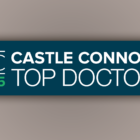Demystifying 4-Level Cervical Spine Fusion: What Patients Need to Know
Living with constant neck pain that spreads down your arms can make daily life hard. Finding real solutions becomes crucial when you feel numbness, tingling, and weakness in your arms that affects your daily activities. For patients with big problems in multiple parts of their neck and spine, 4-level cervical spine fusion might offer relief when other treatments haven’t worked.
The Main Goal: Bringing Back Function and Stopping Plan
A four-level cervical spine fusion is one of the most extensive neck surgeries. This surgery fixes problems affecting four disc spaces in your neck. The procedure (called a four-level anterior cervical discectomy and fusion or ACDF) removes four discs between your vertebrae, then fuses five vertebrae.
Think of your neck spine as a chain with seven links (vertebrae) connected by cushions (discs). When four cushions cause problems, this surgery rebuilds that section. It stops movement between the affected vertebrae, takes pressure off pinched nerves, and makes your spine stable.
The main goals of 4-level cervical spine fusion include:
- Relieving neck pain that spreads to the shoulders and arms
- Fixing nerve symptoms like numbness and weakness
- Making the neck and spine stable
- Preventing more nerve problems
- Improving quality of life and function
When 4-Level Cervical Spine Fusion Becomes Necessary
A 4-level cervical spine fusion might be an option when multiple parts of your neck spine have problems that pinch nerves or make your spine unstable. These problems may include:
- Multilevel Degenerative Disc Disease: When four discs in a row break down, causing long-term pain and nerve symptoms
- Extensive Cervical Spondylosis: Age-related changes affecting multiple levels of the spine, causing bone spurs and narrowed nerve passages
- Multilevel Spinal Stenosis: Narrowing of the spinal canal across several segments, putting pressure on the spinal cord
- Multiple Herniated Discs: When disc material bulges out at four levels, pressing on nerve roots or the spinal cord
- Worsening Nerve Problems: Increasing weakness, coordination issues, or trouble with fine hand movements despite trying other treatments
Before choosing 4-level cervical spine fusion, patients usually have a complete evaluation, including detailed imaging and trying non-surgical treatments like physical therapy, medication, and sometimes injections.
It's time to get back
to doing what you love.
The Surgery Process: The 4-Level Cervical Spine Fusion Approach
Getting Ready: The Pre-Surgery Plan
Your surgical team will do a thorough assessment, including:
- Advanced imaging (MRI, CT scans, X-rays) to map the problem areas
- Nerve tests to check your starting level of function
- Health screening to make sure you’re ready for surgery
- Review of your medications to avoid possible problems
During your consultation, your surgeon will:
- Explain the specific surgical approach planned for you
- Discuss potential risks and expected benefits
- Answer any questions you have
- Set realistic expectations for recovery and results
As surgery gets closer, you’ll receive guidance on:
- Adjusting medications (especially blood thinners)
- Fasting before anesthesia
- Arranging help at home after surgery
- What to bring to the hospital
The Surgery: 4-Level Cervical Spine Fusion Technique
The 4-level cervical spine fusion procedure follows these steps:
- You’ll receive general anesthesia. The surgical team will position you carefully on the operating table to give your surgeon the best access to the front of your neck.
- For a 4-level cervical spine fusion, your surgeon often needs to make a vertical or diagonal incision along the sternocleidomastoid muscle in your neck to access all four levels properly. This approach differs from smaller procedures where horizontal incisions following natural skin creases might be possible. Your surgeon gently moves aside soft tissues to reach the front of your spine.
- Once they can see your spine, your surgeon:
- Confirms the correct levels using imaging
- Carefully removes the damaged discs at all four levels
- Clears away any bone spurs or other material pressing on your spinal cord or nerves
- Prepares the vertebral surfaces for fusion
- After removing the discs, your surgeon:
- Measures the spaces to determine the right size for bone grafts or implants
- Places these grafts or implants into the disc spaces to maintain proper height and alignment
- May use your own bone, donor bone, or synthetic materials
- To give your spine immediate stability while healing:
- Your surgeon secures metal plates along the front of the vertebrae
- Attaches screws to the vertebrae above and below the affected areas
- Maintains the natural curve of your neck
- After checking that everything is placed correctly with imaging, your surgeon:
- Places a small drain if needed
- Carefully closes the incision in layers
- Applies sterile dressings to the wound
The entire procedure typically takes 4-6 hours, depending on your specific case.
Recovery After 4-Level Cervical Spine Fusion
The First Days: What to Expect After Surgery
After 4-level cervical spine fusion, patients usually stay in the hospital for 2-4 days for monitoring. During this time, your medical team focuses on:
- Pain management
- Checking your nerve function
- Ensuring proper wound healing
- Managing temporary swallowing difficulties
- Beginning gentle movement under guidance
In the early recovery period, you may experience:
- Sore throat and trouble swallowing
- Hoarseness or voice changes that typically go away within a few weeks
- Neck stiffness and discomfort around the surgical site
- Shoulder pain or pain between your shoulder blades
Your healthcare team will give you ways to manage these symptoms and signs to watch for that could signal potential problems.
Recovery Timeline: Your Healing Journey
The recovery after 4-level cervical spine fusion happens in stages:
- First 2 weeks: Rest, wound healing, and basic movement while wearing your neck collar
- Weeks 2-6: Gradually increase daily activities while using your collar as directed, possibly starting gentle physical therapy
- Weeks 6-12: Based on your surgeon’s assessment, transition out of the collar and start more active rehabilitation with a gradual increase in allowed activities
- Months 3-6: Return to more normal activities with continued strengthening exercises and progressive improvement in comfort and function
- Months 6-12: Completion of the fusion process with continued improvement in strength and endurance as you adapt to new movement patterns
A structured rehabilitation program plays a big role in recovery. Physical therapy initially focuses on proper posture and body movements, gradually introducing:
- Neck-muscle strengthening exercises
- Addressing any changes in movement patterns
- Working toward restoring movement while respecting limitations
Your surgeon will provide specific guidance on activities, but general recommendations include:
- Avoiding excessive neck bending or twisting
- Limiting overhead activities initially
- No heavy lifting (typically nothing over 5-10 pounds) for several weeks
- Gradual return to driving once collar is removed and pain medications reduced
- Phased return to work based on job demands and recovery progress
Most patients can return to low-activity work within 4-6 weeks, while those with more physically demanding jobs may need 3-6 months before returning.
Weighing the Balance: Risk Factors Specific to 4-Level Cervical Spine Fusion
While 4-level cervical spine fusion can provide significant relief, it’s important to understand that it carries certain risks beyond shorter fusions. These include:
- Longer operation time, which may increase anesthesia-related risks
- Potentially higher rates of problems in nearby spine segments due to the longer fusion
- More impact on neck mobility compared to shorter fusions
- Longer recovery period compared to 1-2 level procedures
- Increased risk of hardware complications with more instrumentation
Your surgeon will work with you to minimize these risks through proper patient selection, careful surgical technique, and comprehensive care before and after surgery.
Navigating Insurance for Complex Cervical Spine Procedures
At Neurosurgeons of New Jersey, we understand that insurance is important when planning complex procedures like 4-level cervical spine fusion. Our dedicated insurance specialists can help you navigate coverage options and verify benefits for this procedure.
We work with many insurance providers, including Aetna, Horizon Blue Cross Blue Shield, and Cigna. Our team will help coordinate pre-approval requirements and address any questions about coverage before your procedure.
Beyond the First Consultation: When and Why to Seek a Second Opinion
Given the complexity and seriousness of 4-level cervical spine fusion, getting a second opinion is often a good idea, especially if:
- You’re unsure about the need for such a complex fusion
- Less invasive options haven’t been fully discussed
- You want answers about the number of levels requiring treatment
- You have concerns about the proposed surgical approach
- You’re experiencing unusual symptoms that don’t clearly match imaging findings
A second opinion gives you confidence in your treatment plan and often reveals personalized approaches that fit your specific condition and lifestyle needs.
Finding Your Spine Expert: Credentials That Count
When seeking a second opinion for 4-level cervical spine fusion, consider surgeons with:
- Board certification in neurosurgery or orthopedic spine surgery
- Fellowship training in complex spine procedures
- Extensive experience specifically with multilevel cervical fusions
- Academic appointments or research involvement in spine care
A reliable second opinion should include:
- A complete review of your medical history and previous treatments
- An independent review of your imaging studies
- A detailed neurological exam
- A clear explanation of what they find and recommend
Taking Control of Your Spine Health: Your Next Steps
A 4-level cervical spine fusion is a major procedure, but it can offer significant relief for those dealing with chronic neck pain, nerve issues, and reduced quality of life caused by extensive neck spine problems.
Choosing this type of surgery is an important decision that should be made after careful consideration. Discussing all options with your doctor, understanding the possible risks and benefits, and having realistic expectations about recovery are essential. For the right patients, 4-level cervical spine fusion can be life-changing, helping to restore function and improve overall well-being.
If you’re considering cervical spine surgery or want a second opinion, it’s important to speak with experienced specialists. At Neurosurgeons of New Jersey, our team includes specially trained experts who combine academic excellence with personalized care. We offer telehealth consultations and thorough evaluations to help you make the best decision for your specific situation.
Ready for relief from persistent neck pain? Request your consultation with our spine specialists today and take the first step toward reclaiming your active lifestyle.
Dr. Anthony Conte, MD
Dr. David Estin, MD, FACS
Dr. Christopher Gillis, MD, FRCSC, FAANS
Dr. Jonathan H. Lustgarten, MD
Dr. Ty J. Olson, MD, FACS

About Eatontown
Our team of board certified physicians, located in Eatontown, New Jersey, are dedicated to bringing you the latest developments and treatment options for spinal surgery. We strive to produce the most clarified & clear content to help you make informed decisions on your medical journey. The road to feeling like your true self should not feel lonely- Let us help you. Please call us to schedule a consultation and speak to one of our team members.






